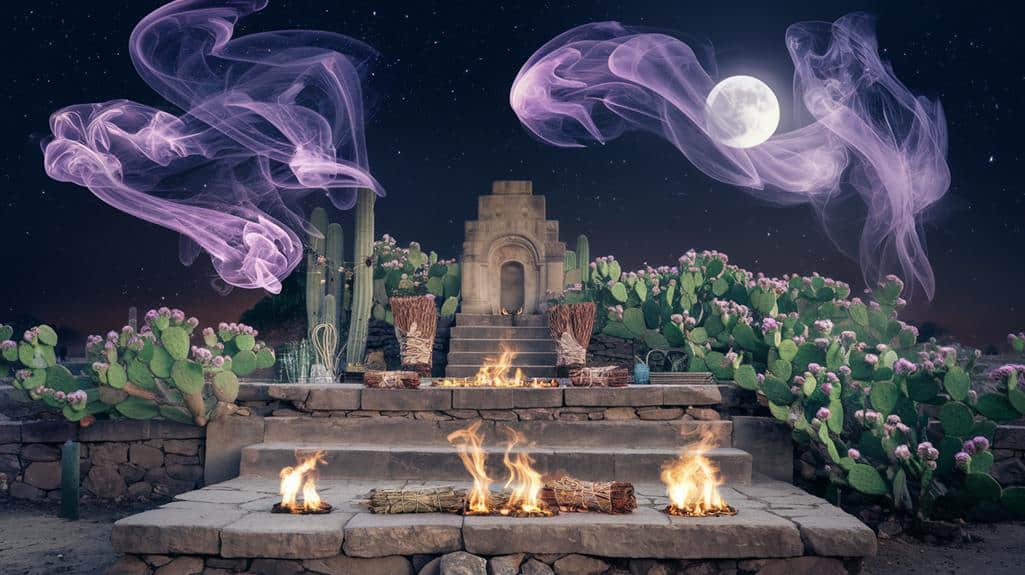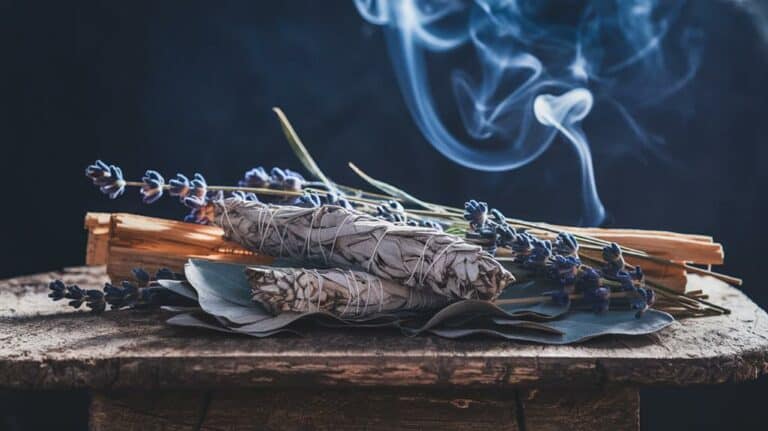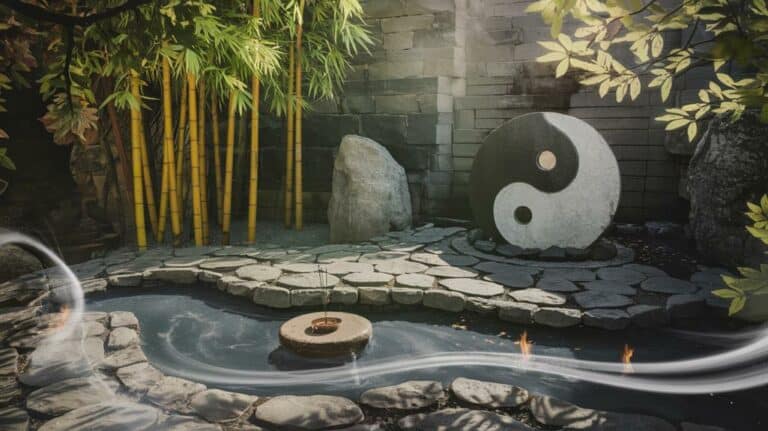9 Sacred Plants Used in Mystical Rituals
Throughout history, you’ll find that sacred plants have served as bridges between the physical and spiritual domains, offering pathways to profound mystical experiences and divine connection. While modern society often dismisses these botanical allies as mere superstition, indigenous cultures worldwide have preserved ancient knowledge of their transformative properties. From the purifying smoke of White Sage to the consciousness-expanding effects of Blue Lotus, these nine sacred plants continue to play essential roles in ceremonial practices. As you explore their individual qualities, you’ll discover why these natural teachers have earned their place in humanity’s spiritual toolkit.
White Sage
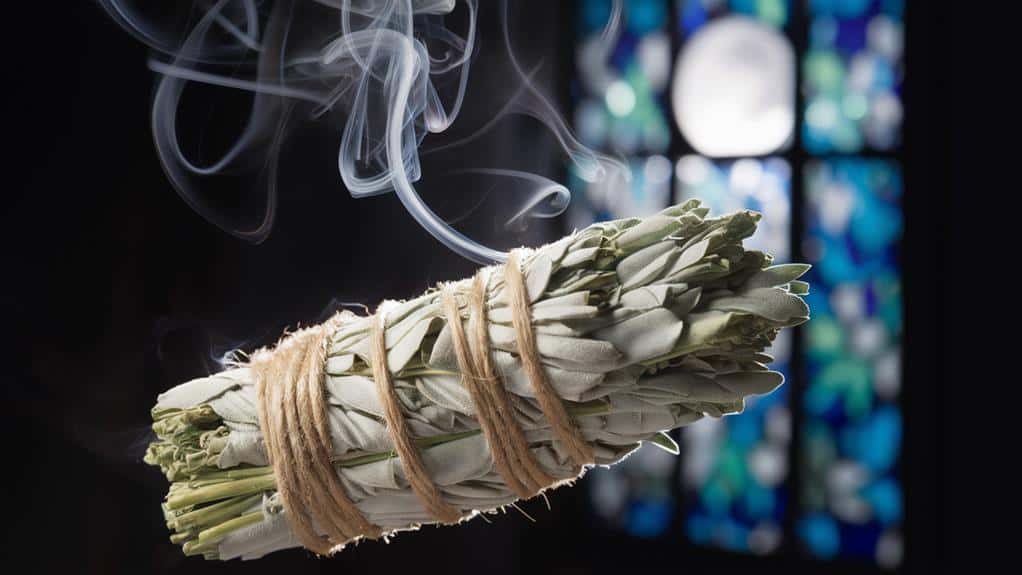
White sage stands as one of the most revered ceremonial plants in Native American traditions. You’ll find this sacred herb growing wild across the sun-drenched slopes of California and the American Southwest, where its silvery leaves reach skyward like nature’s own prayer flags.
When you’re working with white sage, you’re connecting to thousands of years of spiritual wisdom and ceremonial practice.
As you burn the dried sage bundle in a ritual known as smudging, you’ll witness the plant’s metamorphosis into ethereal wisps of purifying smoke. This ancient practice isn’t just about clearing spaces of negative energy – it’s about creating a bridge between your physical reality and the spiritual domain.
You’re participating in a timeless ceremony that indigenous peoples have used to mark profound life changes, heal emotional wounds, and establish sacred boundaries.
When you incorporate white sage into your spiritual practice, you’ll notice its distinct aromatic presence opens doorways to deeper states of consciousness.
The plant’s medicine works on multiple levels, clearing your energetic field while simultaneously grounding you in the present moment, connecting you to both earth and spirit.
Blue Lotus of Egypt
Among ancient Egypt’s most enigmatic sacred plants, the blue lotus (Nymphaea caerulea) held a position of unmatched spiritual significance.
You’ll find this aquatic flower deeply woven into the tapestry of Egyptian mysticism, where it served as a bridge between earthly consciousness and divine dimensions. As you explore its legacy, you’ll discover how pharaohs and priests cherished its ability to induce transformative states of awareness.
When you steep the blue lotus in wine or tea, you’re participating in a ritual that’s thousands of years old. The flower’s mild psychoactive properties can help you access altered states of consciousness, much like the ancient Egyptians who used it in their sacred ceremonies.
You’ll notice its presence in countless temple carvings, where it’s often depicted in the hands of gods and initiates alike.
In today’s world, you’re reconnecting with this sacred plant through meditation and ritual work, though it’s essential to recognize that its effects aren’t as pronounced as other entheogens.
You’re tapping into an ancient current of wisdom when you work with blue lotus, accessing the same mystical doorways that called to the seekers of millennia past.
Peyote

Peyote’s sacred legacy spans thousands of years in Native American spirituality, where this small, spineless cactus serves as a cornerstone of traditional ceremonial practices.
You’ll find this remarkable plant growing naturally in the deserts of Mexico and the southwestern United States, where it’s been revered for its ability to facilitate profound spiritual experiences and healing.
When you participate in traditional peyote ceremonies, you’re entering a sacred space where time-honored rituals connect you to ancestral wisdom.
The medicine men carefully harvest the cactus’s button-like tops, which contain mescaline, the plant’s primary psychoactive compound.
You’ll discover that these ceremonies aren’t merely about altered states – they’re about spiritual purification, community healing, and connecting with divine consciousness.
In modern times, you’re witnessing a delicate balance between preserving these sacred traditions and protecting them from misappropriation.
While the Native American Church has secured legal rights to use peyote in their ceremonies, you’ll understand why indigenous communities remain protective of their spiritual heritage.
The plant’s power demands respect, and its traditional use continues to offer profound insights into consciousness and spiritual awakening.
Holy Basil
Holy basil, also known as Tulsi, represents a stark departure from the intense psychoactive properties of desert cacti, offering instead a gentle yet profound connection to the divine in Hindu tradition.
You’ll find this aromatic herb adorning countless Hindu households and temples, where it’s revered as the earthly manifestation of the goddess Lakshmi, bringing protection and spiritual elevation to those who tend it.
When you incorporate holy basil into your spiritual practice, you’re participating in a tradition that spans thousands of years. Its leaves, whether brewed as tea or used in meditation, can help you achieve a state of clarity and divine consciousness without the overwhelming intensity of other sacred plants.
You’ll notice its subtle effects building gradually – a gentle lifting of mental fog, a deepening of breath, and an opening of the heart center that ancient practitioners believed could dissolve the barriers between the mundane and the sacred.
In your quest for spiritual connection, you’ll discover that holy basil offers a path that’s both accessible and profound, inviting you to explore higher consciousness through simple, daily rituals that honor your connection to the divine.
Syrian Rue
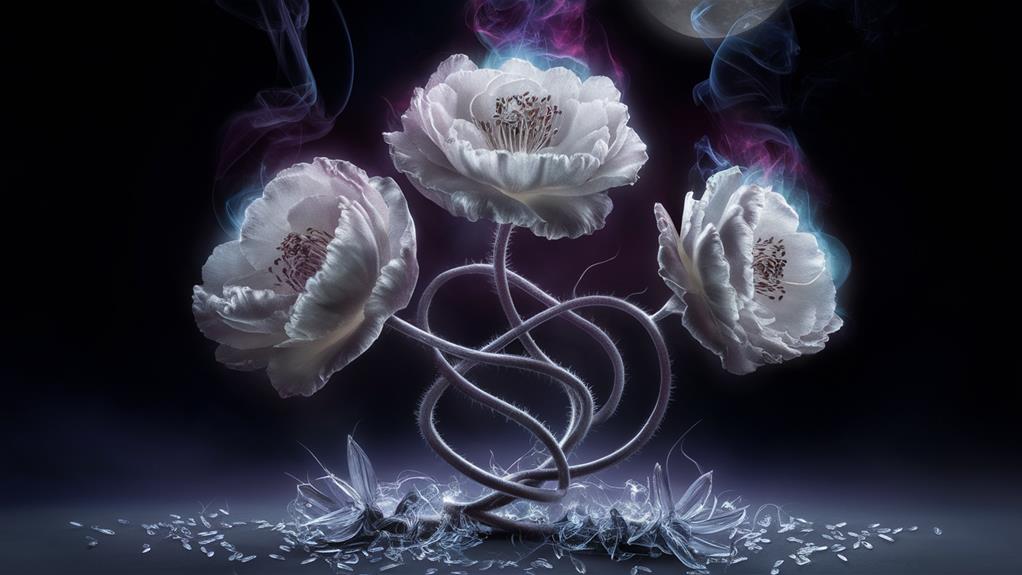
While ancient Middle Eastern cultures revered many sacred plants, Syrian Rue held a particularly significant role in their spiritual ceremonies and healing rituals.
You’ll find this remarkable plant’s legacy woven through the tapestries of Zoroastrian temples and Persian carpets, where its distinctive branching patterns symbolize the pathways between earthly existence and divine domains.
When you explore Syrian Rue’s sacred heritage, you’ll discover that shamans and mystics have long recognized its power to dissolve the boundaries between ordinary consciousness and transcendent states.
The plant’s seeds, scattered across the harsh deserts of Western Asia, carry within them compounds that indigenous healers believe can open the doors of perception.
You’ll learn that traditional practitioners carefully prepare the seeds through specific methods passed down through generations, treating each step as part of a sacred covenant between human and plant spirits.
In modern times, you’re witnessing a renewed interest in Syrian Rue’s ethnobotanical significance, as seekers continue to explore its role in consciousness expansion and spiritual growth, though always with the profound respect this powerful ally demands.
Frankincense
Throughout history, frankincense has stood out as one of the most treasured sacred plants, prized not only for its sweet, piney fragrance but also for its central role in religious ceremonies across multiple faiths.
When you burn frankincense resin, you’re participating in a ritual that’s connected humans to the divine for over 5,000 years. The aromatic smoke rises in delicate spirals, just as it did in ancient Egyptian temples and early Christian churches.
You’ll find this sacred tree resin mentioned prominently in spiritual texts, from the Bible’s account of the Magi’s gifts to ancient Arabic manuscripts describing its use in meditation.
The plant’s significance extends beyond its ceremonial applications. You’re tapping into frankincense’s remarkable ability to alter consciousness when you inhale its smoke during contemplative practices.
Modern research has revealed that the resin contains compounds that can reduce anxiety and lift your mood, explaining why ancient priests and shamans relied on it to facilitate spiritual experiences.
In many ways, you’re breathing in the same transformative essence that’s guided seekers through the ages, forming an unbroken chain of mystical tradition that continues to this day.
Cedar
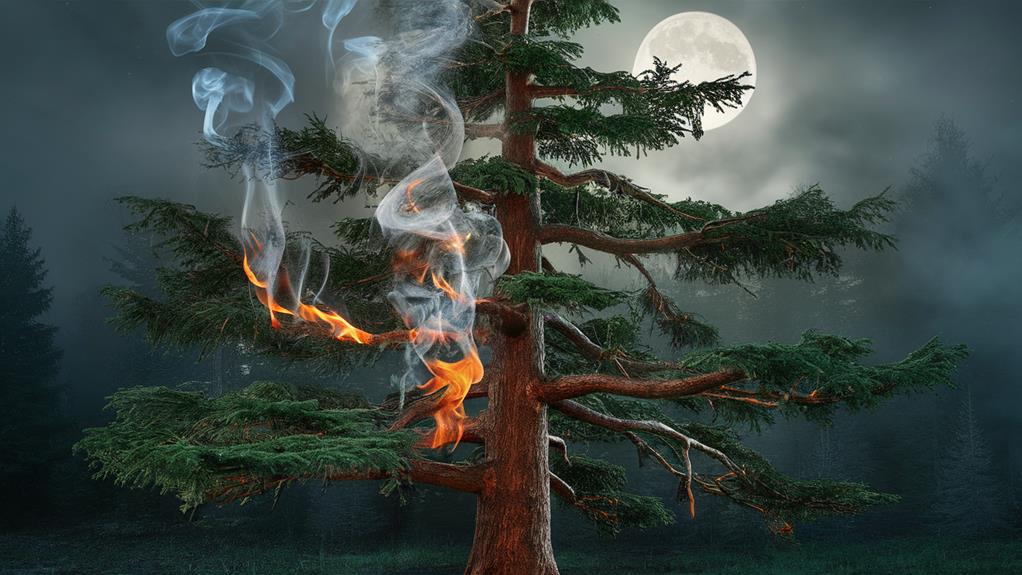
Sacred cedar trees consistently appear in spiritual traditions worldwide, from Native American purification ceremonies to ancient Mesopotamian temples. You’ll find their majestic presence stretching skyward in sacred groves, where their aromatic branches have beckoned truth-seekers for millennia.
When you burn cedar wood or smudge with its leaves, you’re participating in an ancient practice that’s believed to clear negative energy and invite wisdom from higher dimensions.
You can trace cedar’s profound spiritual significance through countless texts and traditions, where it’s revered as a bridge between earthly existence and divine consciousness. Its distinctive fragrance opens pathways to deeper states of meditation, while its smoke is thought to carry prayers heavenward.
When you work with cedar in your spiritual practice, you’re connecting to an unbroken lineage of mystics who’ve recognized its transformative properties. The tree’s remarkable longevity – often spanning centuries – symbolizes immortality and endurance, reminding you of your own eternal nature.
In sacred architecture, you’ll discover cedar’s presence in temples and ceremonial spaces, where it creates an atmosphere of sanctity and protection.
Copal
Ancient Mesoamerican cultures prized copal resin as a divine offering, burning it in temples and spiritual ceremonies to bridge the mortal and spirit spheres. You’ll find this sacred tree resin’s aromatic smoke rising in graceful tendrils, carrying prayers and intentions toward ethereal realms while purifying spaces and souls alike.
When you ignite copal, you’re participating in a tradition that spans millennia, connecting you to ancestral wisdom and timeless spiritual practices.
As you work with copal in your own spiritual practice, you’ll discover its profound ability to shift consciousness and create sacred space. The resin’s sweet, earthy fragrance opens pathways to deeper states of meditation, while its smoke cleanses negative energies and invites protective forces.
You’ll notice how burning copal creates an immediate shift in atmosphere, transforming ordinary moments into extraordinary ones. This powerful plant ally continues to serve as a bridge between worlds, offering you direct access to ancient knowledge and spiritual insight.
When you incorporate copal into your rituals, you’re not just burning incense – you’re invoking the divine presence that indigenous peoples have honored for countless generations.
Sacred Tobacco
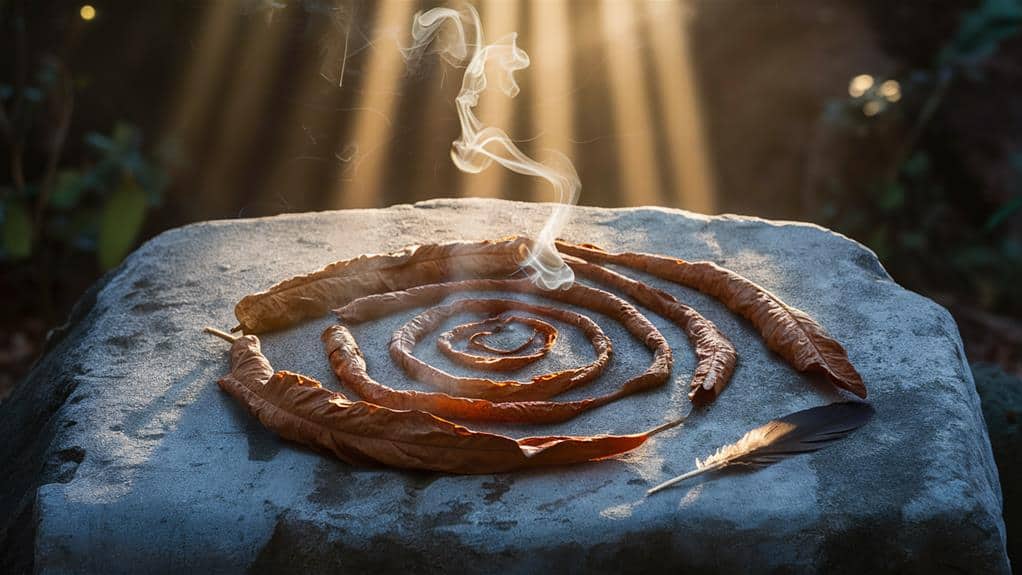
Like copal, tobacco holds profound spiritual significance in indigenous ceremonies, though its ritual use extends far beyond simple burning. You’ll find this sacred plant woven deeply into shamanic traditions, where it’s revered as a bridge between earthly and spiritual domains.
When you work with ceremonial tobacco, you’re connecting to thousands of years of spiritual practice, where the plant serves as both offering and medicine.
In traditional ceremonies, you’ll witness tobacco being used to purify spaces, seal intentions, and open sacred communications with spirit dimensions.
As you explore deeper, you’ll discover how indigenous healers believe tobacco smoke carries prayers skyward, while its placement in sacred bundles creates protective boundaries between worlds.
The plant’s spirit teaches you about reciprocity – you’ll learn to give before you receive, to honor before you ask.
Through mindful ritual use, you’re participating in an ancient dialogue between human consciousness and natural wisdom.
You’ll find that traditional peoples don’t view tobacco as a casual substance, but rather as a powerful teacher that demands respect, intention, and proper ceremonial context.



